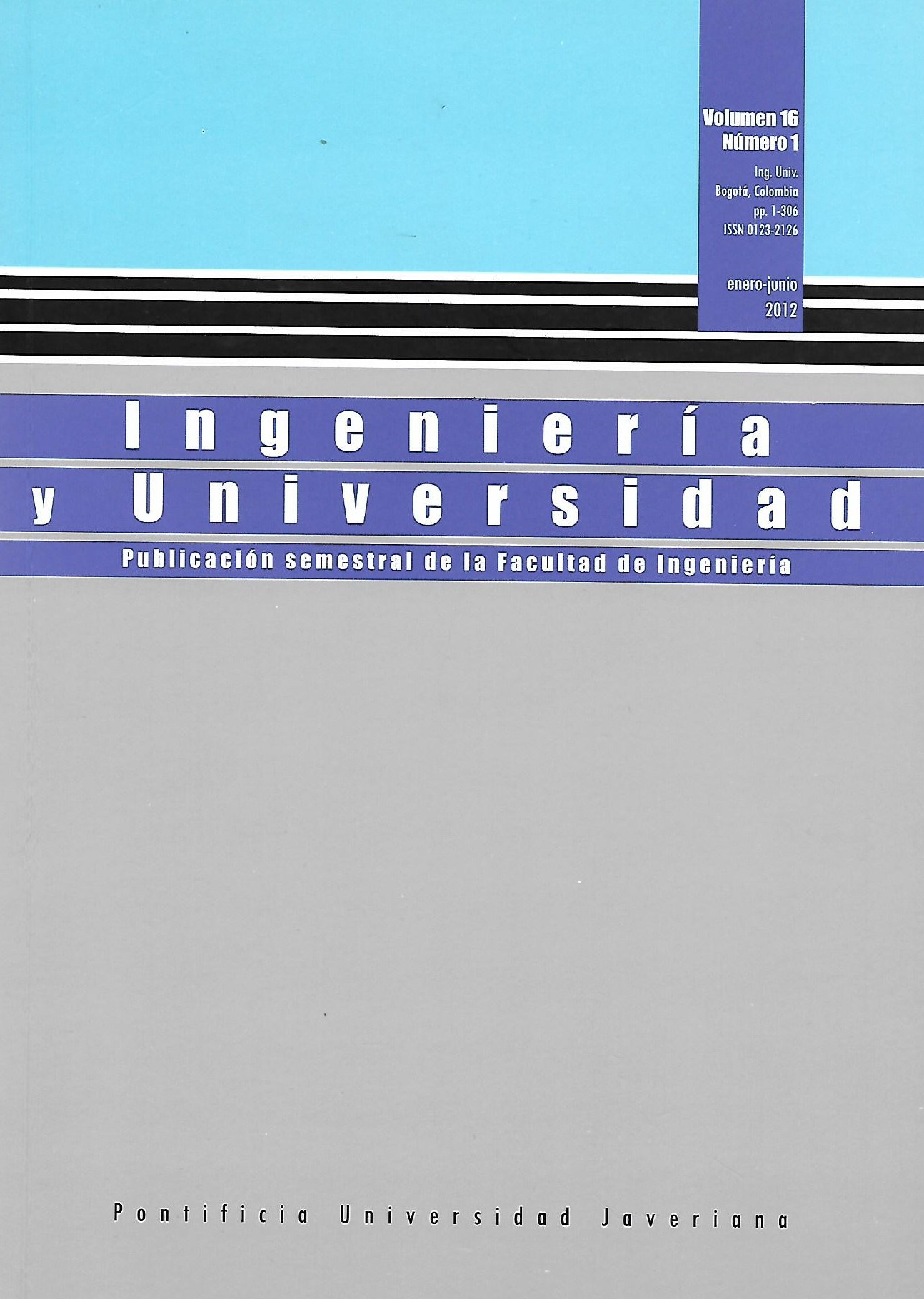Abstract
The objective of this research is to assess the environmental impacts associated with the construction and use of a residential house. Building materials and electricity end-uses were assessed. The study was used to highlight some initiatives for the residential-building industrial sector and also some of the aspects that should be considered when trying to improve sustainability indicators. As a study case, a Colombian dwelling located in the city of Pamplona was chosen. The findings of this research showed that the highest environmental impacts during the dwelling’s life cycle take place during the operation phase of the dwelling, while construction phase generates about 7-28% of the impact. Transportation and maintenance combined account for less than 10% of the life cycle impacts.
DANE. National Department of Statistics in Colombia [document on line]. <http://www.dane.gov.co/> [Accessed: 06-09-2007].
ECOINVENT CENTRE. Ecoinvent data V2.01, Swiss Centre for life cycle inventories [document on line]. <http://www.ecoinvent.ch> [Accessed: 02-04-2006].
GLOBAL CONSTRUCTION 2020 [web on line]. <http://www.globalconstruction2020.com/product> [Accessed: 07-07-2011].
INTERNATIONAL ORGANIZATION FOR STANDARDIZATION (ISO). International Standard ISO 14040: Environmental management -- Life cycle assessment -- Principles and framework. Geneva, Switzerland, 2006.
IPCC CLIMATE CHANGE. Working group 1: the scientific basis [document on line]. 2001. <http://www.grida.no/climate/ipcc_tar/wg1/038.htm 2001> [Accessed 02-11-2006].
IPP, INTEGRATED PRODUCT POLICY. European Commission 2003. Identifying products with the greatest potential for environmental improvement [document on line]. 2004. <http://ec.europa.eu/environment/ipp/identifying.htm> [Accessed 01-11-2006].
KEMMLER, A. y SPRENG, D. Energy indicators for tracking sustainability in developing countries. Energy Policy. 2007, vol. 35, pp. 2466-2480.
KOTAJI, S.; SCHUURMANS, A. and EDWARDS, S. Life Cycle Assessment in building and construction: A state of the art report. Society of Environmental Toxicology and Chemistry (SETAC). 2003, pp. 1-4.
MDG. Millennium Development Goals Inform [document on line]. 2007. <http://www.un.org/spanish/millenniumgoals/report2007/mdgreport2007r2.pdf> [Accessed 04-05-2007].
MELCHERT, L. The Dutch sustainable building policy: A model for developing countries? Building and Environment. 2007, vol. 42, pp. 893-901.
ORTIZ, O.; FRANCESC, C. and SONNEMANN, G. Sustainability in the construction industry: a review of recent developments based on LCA. Construction and Building Materials. 2008, vol. 44, pp. 28-39.
ORTIZ, O.; BONNET, C.; BRUNO, J. and CASTELLS, F. Sustainability based on LCM of residential dwellings: A case study in Catalonia, Spain. Building and Environment. 2008, vol. 44, pp. 584-594.
SIMPPLE SL. LCAManager. Environmental management tool [document on line]. <http://www.simpple.com> [Accessed 09-07-2006].
UPME, UNIDAD DE PLANEACIÓN MINERO ENERGÉTICA. Energy balance 1975 – 2006 [document on line]. Bogotá: Ministerio de Minas y Energía de Colombia. <http://www.minminas.gov.co/minminas/pagesweb.nsf?opendatabase> [Accessed 02-04-2007].
This journal is registered under a Creative Commons Attribution 4.0 International Public License. Thus, this work may be reproduced, distributed, and publicly shared in digital format, as long as the names of the authors and Pontificia Universidad Javeriana are acknowledged. Others are allowed to quote, adapt, transform, auto-archive, republish, and create based on this material, for any purpose (even commercial ones), provided the authorship is duly acknowledged, a link to the original work is provided, and it is specified if changes have been made. Pontificia Universidad Javeriana does not hold the rights of published works and the authors are solely responsible for the contents of their works; they keep the moral, intellectual, privacy, and publicity rights.
Approving the intervention of the work (review, copy-editing, translation, layout) and the following outreach, are granted through an use license and not through an assignment of rights. This means the journal and Pontificia Universidad Javeriana cannot be held responsible for any ethical malpractice by the authors. As a consequence of the protection granted by the use license, the journal is not required to publish recantations or modify information already published, unless the errata stems from the editorial management process. Publishing contents in this journal does not generate royalties for contributors.


